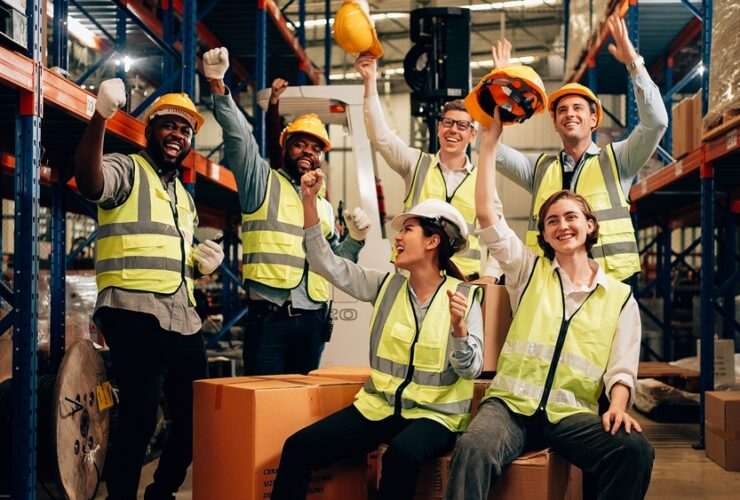The Crisis of Suicide in the Construction Industry
Construction is a risky profession for several compelling reasons. Individuals working in construction face numerous hazards, including the “fatal four,” exposure to various risks, and challenging weather conditions. These factors can substantially impact both their physical and mental well-being.
According to a research by CDC, it estimated that 49.4 construction and extraction workers out of every 100,000 lose their lives to suicide. Keep in mind that this twice the suicide rate for men working in other industries.
Mental Health Traumas – A Silent Killer in the Construction Industry
Despite its undeniable importance, mental health within the construction sector remains a neglected topic. Regrettably, it has earned the moniker “silent killer” because inadequate mental health can culminate in depression and, in severe cases, even suicide. The prevalence of mental health issues in construction is an urgent safety concern and a crisis that requires our attention.
Across the board, workplace mental health challenges are on the rise, especially as we navigate the post-Covid-19 era. The global landscape has seen significant shifts in job security, worksite safety, personal freedom, and profitability, which have had a profound impact.
This situation is particularly relevant in the construction sector, an inherently demanding field fraught with safety concerns. Job security, which has become increasingly uncertain, adds another stress layer for construction workers.
The Rate of Suicide and Depression in Construction
Statistical data underscores the prevalence of mental health challenges among construction workers, with 60% reporting such issues.
These mental health concerns within the construction field can be attributed to various factors. Substance misuse, burnout, insufficient nutrition and jobs displacement are among these. However, one of the more pervasive problems is the shade of depression, which can eventually lead to the miserable outcome of suicide.
Disturbingly, the CDC reports that the construction industry exhibits the highest suicide rate among all sectors, with a sobering statistic of 53 suicides per 100,000 workers. Remarkably, despite construction being acknowledged as a high-risk profession for physical safety, these 53 suicides surpass the combined total of all other causes of death in the industry by a factor of five.
Recognizing the importance of prioritizing the well-being and mental health of those who construct our cities, safety programs must adopt a comprehensive approach, much like Construction Suicide Prevention Week.
Before delving into preventative and intervention measures, let’s delve into the risk factors, underlying causes, and warning signs associated with these mental health challenges.
Risks Factors and Warning Signs of Suicide in Construction Workers
Suicide and depression among construction workers can be categorized into two broad groups: external influences and internal factors.
External Influence
External influences encompass factors beyond the control of the individual or the workplace. These include genetic predisposition and past traumatic experiences.
Internal Influence
On the other hand, internal influences relate to elements inherent to the job itself. We’ve already discussed how the stress associated with a high-pressure, high-risk work environment can contribute to depression. This environment may also foster substance abuse, frequently leading to dependence and depression.
Notably, the construction industry is predominantly male, and men have a higher suicide rate than women. Furthermore, societal stigmatization makes men less likely to seek help for mental health concerns. Consequently, they may develop harmful coping mechanisms that exacerbate their symptoms.
All of these factors collectively drive up suicide rates. When individuals experience stress, helplessness, dependence, or despair naturally increases the likelihood of suicidal thoughts and, consequently, suicide rates. The warning signs include
- Expressing a desire to die or talking about suicide.
- Social withdrawal and isolation.
- Giving away possessions or making final arrangements.
- Sudden changes in behavior, mood, or appearance.
- Increased use of alcohol or drugs.
- Expressing feelings of hopelessness or helplessness.
- Drastic changes in sleep patterns (either too much or too little).
- Reckless behavior or saying goodbye to loved ones.
How To Help – What is Construction Suicide Prevention Week
Addressing the rising rates of suicide and depression among construction workers is undoubtedly a complex challenge, with some factors lying beyond the control of managers and HR professionals. But Construction Suicide Prevention Week can help.
Construction Suicide Prevention Week is an annual awareness initiative that was launched by a group of volunteers within the construction industry with the mission of saving lives.
It takes place every year during September, which is recognized as National Suicide Prevention Month. The primary goal of Construction Suicide Prevention Week is to draw attention to the higher-than-average rates of suicides within the construction industry and to provide resources and support aimed at preventing such tragic deaths.
During this week, various activities and events are organized within the construction industry to raise awareness about the unique challenges that construction workers may face which can contribute to mental health issues and, in some cases, lead to suicide. These challenges may include job-related stress, long hours, physical demands, financial pressures, and more.
The week serves as an opportunity to promote open conversations about mental health, reduce the stigma surrounding seeking help, and provide information on available resources for those in need. By coming together and addressing these issues as an industry, the hope is to save lives and improve the mental well-being of construction workers.
The Need to Come Together
It’s essential to remain vigilant about the mental health of our construction workers. Mental health concerns in this field are often called the “silent killer” precisely because they can go unnoticed until it’s too late.
Take action during Construction Suicide Prevention Week by raising awareness in your construction community, participating in events, promoting mental health discussions, and educating yourself about the challenges workers may face.
By doing so, you contribute to the mission of saving lives and improving the mental well-being of those in the construction industry.
Together, we can make a difference and create a safer, more supportive environment for all.







